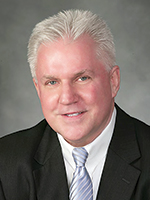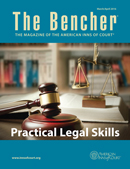Is Achieving Competence in Technology a Pipe Dream!
The Bencher—March/April 2016
By Kevin F. Brady, Esquire

 By all accounts, lawyers do not meet standards of ethical competency in technology. The sophistication and complexities surrounding technology are significant and evolving at breakneck speeds.
By all accounts, lawyers do not meet standards of ethical competency in technology. The sophistication and complexities surrounding technology are significant and evolving at breakneck speeds.
In August 2012, the American Bar Association’s House of Delegates voted to amend the comment to Rule 1.1 of the Model Rule of Professional Conduct noting that lawyers “should keep abreast of changes in the law and its practice, including the benefits and risks associated with relevant technology….” Rule 1.1 Commentary (emphasis added). Unfortunately there has been no further guidance as to how competence in technology should be achieved, maintained, or measured. Technology is not taught in law school or tested on the bar examination and no CLE requirements exist regarding technology.
While many lawyers understand the case law and the procedural rules regarding technology in discovery, we are also charged with understanding the “relevant technology.” Litigators, who try to understand the technology, struggle to appreciate the benefits and risks of the evolving technology used to manage digital information. The challenge is compounded when factoring in the personal privacy and data security issues associated with those “relevant technologies.”
Personal injury lawsuits, family law matters, and employment lawsuits can be won or lost based on evidence from Facebook, Snapchat, Fitbit, e-mail, voicemail, and text messages. Even discussions of keyword searches or file format can challenge the technical capacity of many attorneys. An example of just how little the technology needle has moved is Federal Rule of Evidence 502, which was specifically enacted to eliminate the risk of privilege waiver in handling digital information as well as reducing the cost. Despite being enacted in 2008, Rule 502 remains largely ignored by the bench and bar today.
While many jurisdictions have amended their rules of professional conduct to reflect the ABA’s language in the commentary of Rule 1.1, very few have taken steps to address the technology problems lawyers face in the practice of law. In 2009, the Seventh Circuit Electronic Discovery Pilot Program Committee developed guidance relating to eDiscovery “to provide the bar with educational information about the various technologies that are available and how they can be effectively used to improve efficiency and quality in electronic discovery.” In 2013, after discussions with the Richard K. Herrmann Technology American Inn of Court in Delaware, the Delaware Supreme Court formed the Commission on Law & Technology consisting of judges, lawyers, and IT professionals, and charged it with developing and publishing technology guidelines and best practices. Educational programs exist for lawyers to understand the law surrounding technology, but none addresses the challenge the technology presents.
The State of California Standing Committee on Professional Responsibility and Conduct issued a Formal Opinion No. 2015-193 on June 30, 2015 which addressed a number of issues regarding an attorney’s ethical duties in the handling of discovery of digital information. While the California opinion helps to raise awareness of the numerous “legal rules and procedures” regarding eDiscovery, it fails to provide guidance on the specifics of the technology involved and what steps attorneys should take to meet the required minimum level of competence in understanding the “benefits and risks” associated with that technology.
The California opinion does note that “[c]ompetency may require even a highly experienced attorney to seek assistance in some litigation matters involving ESI.” While this is also an option under the Commentary to ABA Model Rule 1.1, it is not a solution. The “associate or consult with a lawyer of established competence in the field in question” approach is very helpful for targeted or sophisticated technological challenges, but it was meant to address the issue of a lawyer involved in an area of the law that he or she normally does not practice. The rule was not meant to be a safe harbor for a core competency such as discovery.
What is the Answer?
If a teacher gives a test and an overwhelming majority of the students fail the exam, the problem lies not with the students, but the test. We need to change the test. Keeping up with changes in technology is not a viable option—so what should the test be for minimal competence in technology? How do we provide realistic and practical guidance for lawyers to handle the challenges that technology raises?
Kevin F. Brady, Esquire is of counsel in the firm of Redgrave LLP in Washington, DC. He is the president of the Richard K. Herrmann Technology AIC in Wilmington, DE, and a former member of the American Inns of Court Board of Trustees.
© 2016 Kevin F. Brady, Esq. This article was originally published in the March/April 2016 issue of The Bencher, a bi-monthly publication of the American Inns of Court. This article, in full or in part, may not be copied, reprinted, distributed, or stored electronically in any form without the express written consent of the American Inns of Court.